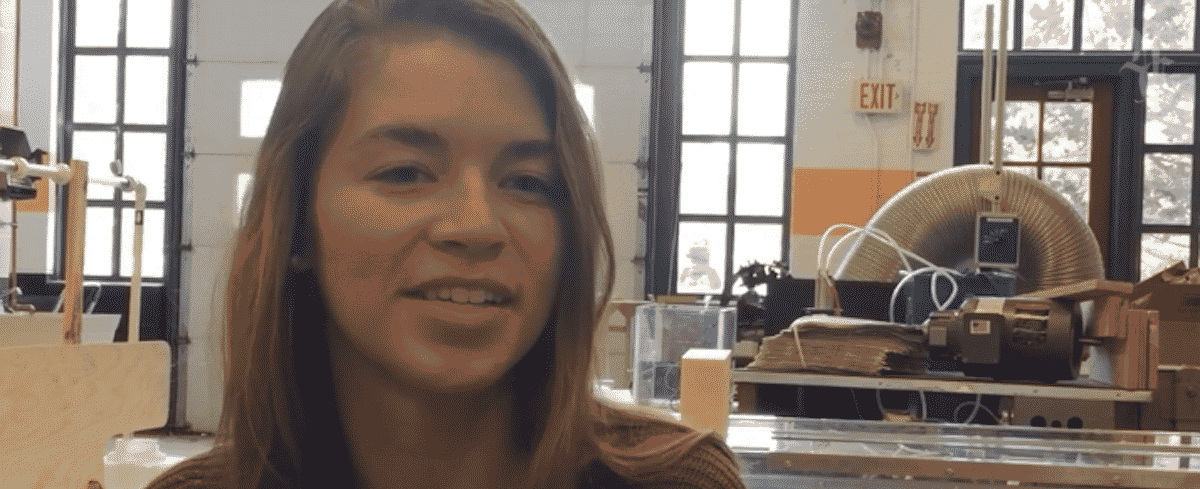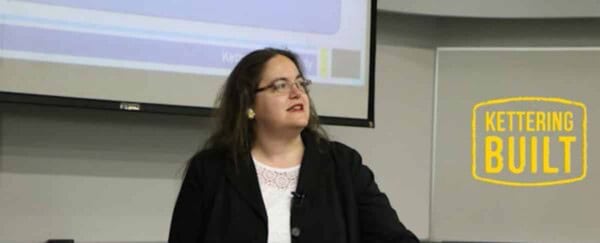This article by Cheyenne Hassett was published in the Hartford Courant.
When Sami D’Agostino, a senior at UConn studying civil engineering, arrived on campus, she knew what to expect as a female in a field long dominated by males.
“You walk into these classes and you see it’s mostly guys, and yes there’s a few girls, but it’s definitely not a 50-50 split,” said D’Agostino. “I think every girl walks into these classes with the mentality that they kind of have to prove themselves.”
But thanks to a focused effort by UConn — and national attention on the lack of women in science, technology, engineering and mathematics fields (STEM) — the university has made notable progress, doubling enrollment of women in the engineering program.
The increase recently placed UConn first in the country for percentage gains of female engineering graduates, according to a survey of 90 public schools by The Washington Post.
With a rise in enrollment from around 350 women in 2009 to 800 last year, paired with a 9 percent increase in female graduates, women make up about 24 percent of the major — compared to a national average of 20 percent.
The school has also grown its male enrollment by a hefty 54 percent, but female enrollment far surpasses that, with an increase of 130 percent.
“If the students don’t see other students like them in practice, they don’t have the ability to see themselves,” said Daniel Burkey, associate dean for undergraduate education and diversity at UConn and former associate head of the chemical engineering program.
Changing The Perception Of Engineering
The percentage of women in engineering programs has remained relatively constant, said Jonna Gerken, president-elect of the Society of Women Engineers and a project manager at Pratt and Whitney in East Hartford. “It shows how much work there is to be done,” she said.
And the earlier young girls are connected with women in engineering, the better. Burkey cited evidence that students turn away from science and engineering as early as the third grade, which makes those years a critical time to step in and show girls the field.
“If they’re doing outreach to high school students, a lot of those students have already self-selected into STEM,” Burkey said. This creates problems down the road.
“If I don’t start having a diverse number of students in grade school, then 20 years later when I’m looking for a Ph.D. student, if I haven’t done the work all along they won’t exist there,” Burkey said.
UConn credits its targeted outreach for the success it has seen. The university promotes and participates in programs like Multiply Your Options, a one-day conference for eighth-grade girls;Engineering Ambassadors, which sends UConn students to visit local schools; and BRIDGE, a summer session for incoming freshmen who are underrepresented in the engineering school.
Kevin McLaughlin, the director of the engineering diversity and outreach office at UConn, organizes many of these programs. He’s been expanding the role for about a decade.
“One of the things I do know is this: Young people are unsure of themselves and developing confidence. A lot of what helps confidence is seeing good role models; seeing behaviors you want to model yourself, seeing people happy with their decisions in life. Those are great role models,” McLaughlin said.
Maria Chrysochoou, a professor of civil and environmental engineering, sees this firsthand. “When I participate in the open house and tell students our program has several female faculty and professors, I see a light in their eyes— I see that they enjoy this,” she said.
Chrysochoou said it’s important to dispel the perception of engineering as a “one dimensional job.”
“You need to be very flexible and have people skills, management and communication skills,” an aspect of the profession Chrysochoou said women have a lot to contribute to.
The growth in enrollment, McLaughlin said, has also been changing the perception of engineering. As much as he can, he tries to paint the field as one with “positive social impact,” which resonates especially well with prospective women engineering majors, he said.
“I think that women are very interested in helping other people, helping the world be a better place … We’re trying to help them understand what these different fields do,” he said.
Defying Expectations
D’Agostino came to UConn on the heels of one of the programs McLaughlin helped develop— BRIDGE, the summer program for underrepresented students.
D’Agostino has seen engineering as “not something all girls do” since high school, when she was one of just three girls in an engineering class. “That’s when I saw this gender gap in engineering, and once I got to UConn it just felt magnified,” she said.
BRIDGE connected her to a network of girls and other students who would be in the minority in many of their classes. It was a big help to see familiar faces in large classes where she said she could tell “most guys just thought I was in the wrong class.”
When it came to group projects, a key tenet of the major, D’Agostino realized whether it’s men or women, equally divided or not, students must learn to work together. Still, it can be a struggle: D’Agostino recalls a story from one of her friends, a woman who was in a group with four male students. “They talked about the technical stuff and basically just had her typing, handling the organizational aspects,” she said.
But D’Agostino notices more girls getting involved and speaking up. “It’s something girls have to get used to. I’m not the secretary on the job, I’m the engineer on the job,” she said. “Working with anyone, not just girls or guys, you have to learn how people communicate and work together,” she said.
She also joined the UConn chapter of the Society of Women Engineers, one of the clubs at UConn for women in STEM. Another option is Phi Sigma Rho, the sorority for women in engineering.
Jenny Skoog, a sophomore chemical engineering major at UConn, is a member.
“I was definitely preparing for the worst when I decided I wanted to be an engineer,” she said. But her involvement in her sorority and outreach programs like Multiply Your Options keep her from feeling the gender gap.
“I definitely expected women to be lower represented than I’ve seen, and I’m sure that’s not the case for everybody, but as far as I’m concerned chemical engineering has been a very positive experience for me,” she said. “I never felt like I could do anything less, I never felt like there was a stigma against women in engineering.”
Still Outnumbered
“Being here the past few years, you can definitely see there is a rise in women and an effort to get women out and participating,” said Katelyn Houlihan, a senior biomedical engineering major at UConn.
Houlihan, too, noted her pride for UConn’s advances and her own positive experience. But, she said, the field is not without its challenges.
But less than one in four women in engineering is still a ways away from equal enrollment and despite the recent growth females are still outnumbered.
“It would be great for me to say that people never think because you’re a woman in engineering, you’re less capable, but it does happen. Men in engineering do sometimes have that thought process — it’s not always conscious, but it happens,” Houlihan said. “Getting your voice out there is important, once they see you’re competent and willing to put in the work and voice your ideas, you don’t typically have to face any more problems,” she said.
Speaking out, D’Agostino agreed, is an effective way to spark change.
“There are people out there telling us we’re supposed to be here. We’re having this conversation that girls can be in engineering and it doesn’t just have to be guys,” she said. “We don’t have to demote ourselves because we’re afraid.”






